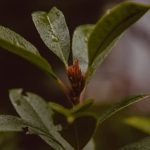Do you have a shady area in your garden that you’re not quite sure what to do with? Fear not. This article will provide you with gardening ideas for shady areas, helping you to make the most of these often overlooked spaces. Gardening in shady areas can present unique challenges, but with the right knowledge and plant selection, there are endless opportunities to create a beautiful and thriving garden.
Shade comes in many forms, from full shade to partial shade and dappled shade. Each type of shade presents its own set of considerations when it comes to choosing the right plants and designing your garden space. Understanding the different types of shade is crucial to successfully creating a lush and inviting shaded garden.
In this article, we will explore how to choose the right plants for shady areas, including shade-loving perennials, shrubs, and ground covers. We’ll also delve into tips for designing a shade garden that is both beautiful and functional, as well as maintenance tips for keeping your shaded garden healthy and vibrant.
Whether you have a small patch of shade or an entire shaded yard to work with, there are plenty of creative solutions to transform these spaces into enchanting gardens.
Understanding the Different Types of Shade
When it comes to gardening in shady areas, it is important to understand the different types of shade and how they can affect plant growth and development. Full shade, partial shade, and dappled shade each present their own set of challenges and opportunities for gardeners looking to create a thriving garden in shaded spaces.
Full Shade
Full shade refers to areas that receive less than 3 hours of direct sunlight per day. In these areas, plant options may be more limited as many plants require some amount of sunlight to thrive. However, there are still plenty of shade-loving plants that can thrive in full shade conditions, such as hostas, ferns, and certain varieties of astilbe.
Partial Shade
Partial shade areas receive between 3-6 hours of sunlight per day. This type of shade offers more flexibility when it comes to plant selection, as there are many plants that can tolerate both sun and shade. Some popular options for partial shade include bleeding hearts, coral bells, and Japanese painted ferns.
Dappled Shade
Dappled shade occurs when sunlight filters through trees or other overhead foliage, creating patches of light and shadow throughout the day. This type of shade often provides a more dynamic growing environment for plants. Dappled shade tolerant plants include foxgloves, lamiums, and hellebores.
Understanding the specific type of shade in your garden will help you choose the right plants and design strategies to create a beautiful and thriving shady garden space. By carefully considering the unique characteristics of each type of shade, you can maximize the potential of your shaded garden area while minimizing potential challenges.
Choosing the Right Plants for Shady Areas
When it comes to gardening in shady areas, selecting the right plants is crucial for the success of your garden. Shade-loving perennials, shrubs, and ground covers are all excellent choices for adding color, texture, and interest to these often overlooked spaces. By choosing the right plants, you can create a lush and beautiful garden that thrives in low light conditions.
Shade-Loving Perennials
Shade-loving perennials are a great option for adding color and vibrancy to shady areas. Some popular options include hostas, astilbes, ferns, and bleeding hearts. These plants come in a variety of sizes, shapes, and colors, allowing you to create a dynamic and visually appealing garden that will thrive in the shade.
Shade-Loving Shrubs
Shade-loving shrubs are another fantastic choice for adding structure and interest to shady areas. Azaleas, rhododendrons, and hydrangeas are all excellent options for creating a beautiful shady garden with their stunning blooms and lush foliage. Additionally, evergreen shrubs like yews and boxwoods can add year-round greenery to your shaded space.
Ground Covers for Shady Areas
Ground covers are essential for filling in empty spaces and creating visual unity in shaded gardens. Some great options for ground covers in shady areas include vinca minor, lamium, and sweet woodruff. These low-growing plants help suppress weeds while adding texture and visual appeal to the garden floor.
By carefully selecting shade-loving perennials, shrubs, and ground covers, you can create a beautiful and thriving garden in even the shadiest of spots. These plants will not only survive but also flourish in low light conditions while enhancing the overall beauty of your outdoor space. Explore different varieties of shade-loving plants to find the perfect additions to your shady garden oasis.
Designing a Shade Garden
One of the key tips for designing a shade garden is to carefully consider the layout and arrangement of plants. Since sunlight is limited in shaded areas, it’s important to maximize the available light by strategically placing plants. Taller plants can be positioned at the back of the garden bed, while shorter plants can be placed towards the front to ensure that each plant receives adequate light.
In addition to plant placement, choosing an appropriate color scheme can also enhance the visual appeal of a shade garden. While shaded spaces may seem dark and gloomy, incorporating bright or contrasting colors can add vibrancy and interest to the area. For example, planting flowering species with bold hues or variegated foliage can bring life to a shady garden. This creates a visually appealing contrast against the darker backdrop, making the space feel more inviting.
When designing a shade garden, it’s also important to consider hardscaping elements such as pathways, seating areas, and decorative features. These elements can help create structure and define different zones within the garden.
Additionally, incorporating shade-tolerant ornamental structures like arbors or trellises can provide support for climbing plants while adding vertical interest to your shade garden design. By carefully planning out these elements, you can create a beautiful and functional shady garden space that you’ll enjoy year-round.
Maintenance Tips for Shady Gardens
When it comes to maintaining a shady garden, proper watering, mulching, and pruning are essential for the health and vitality of your plants. Shady areas often have different moisture levels than sunny spots, which means that you’ll need to pay special attention to the watering needs of your shade-loving plants.
Here are some maintenance tips for keeping your shady garden looking its best:
- Watering: Since shady areas tend to be more moist and humid, it’s important not to overwater your plants. Be sure to check the soil moisture regularly and adjust your watering schedule accordingly. Consider using a soaker hose or drip irrigation system to provide consistent moisture without promoting fungal diseases.
- Mulching: Mulch is key for retaining moisture and suppressing weeds in shady gardens. Organic mulches like shredded bark, wood chips, or compost can improve soil structure and fertility as they decompose. Apply a 2-3 inch layer of mulch around your plants, keeping it several inches away from stems or trunks to prevent rot.
- Pruning: Proper pruning helps maintain the shape and size of your shade-loving plants while also improving air circulation and light exposure. Remove dead or diseased branches, thin out dense growth, and shape plants as needed to encourage new growth. Avoid heavy pruning in late summer or early fall as this can stimulate new growth that might not harden off before winter.
By implementing these maintenance tips into your gardening routine, you can ensure that your shady garden remains healthy and beautiful throughout the growing season.
Remember that every plant has specific needs based on sunlight requirements as well as if it grows better in dappled shade rather than full shade so make sure you know what type of shade you have before starting any planting project whether it’s by using containers or by incorporating structures like arbors or trellises (as mentioned on Section 6) into those areas.
Creative Container Gardening for Shady Areas
When it comes to gardening in shady areas, container gardening can be a game-changer. Not only does it allow you to add greenery and color to areas with limited sunlight, but it also provides the flexibility to move plants around as needed. Whether you have a small balcony, patio, or shaded corner in your yard, utilizing pots and planters for shade-loving plants can help you create a beautiful and thriving garden space.
When choosing plants for shady containers, look for varieties that thrive in low light conditions. Some popular options include ferns, hostas, begonias, impatiens, and caladiums. These plants not only tolerate shade well but also add texture and visual interest to your container arrangements. Additionally, combining different foliage colors and textures can create stunning compositions even in the absence of direct sunlight.
To ensure the success of your container garden in shady areas, consider the specific watering needs of shade-loving plants. While these plants may not require as much water as those in sunny spots, it’s important to maintain consistent moisture levels in the soil. Using high-quality potting mix and adding a layer of mulch on top can help retain moisture while preventing waterlogged roots.
Lastly, don’t be afraid to get creative with your container choices. Utilize hanging baskets, window boxes, and decorative pots to add vertical interest and maximize space in shady areas. Whether you’re looking to brighten up a dimly lit balcony or create a lush oasis under a tree canopy, container gardening offers endless possibilities for enhancing shaded spaces.
| Shade-Loving Plants for Containers | Tips for Container Gardening in Shady Areas |
|---|---|
| Ferns | Choose containers with drainage holes to prevent waterlogging |
| Begonias | Consider incorporating trailing plants for added visual appeal |
| Impatiens | Rotate and reposition containers as needed to provide adequate light exposure |
Incorporating Shade Structures and Features
When it comes to gardening in shady areas, incorporating shade structures and features can help enhance the overall design and functionality of the space. Whether you have a full shade, partial shade, or dappled shade area, there are various options for adding arbors, trellises, and other hardscape elements to your garden. Here are some ideas for incorporating these features into your shady garden:
- Arbors: Adding an arbor to your shady garden not only provides structural support for climbing plants but also adds visual interest and definition to the space. Consider planting shade-loving vines such as climbing hydrangea or clematis to adorn the arbor and create a lush green focal point.
- Trellises: Similar to arbors, trellises offer support for climbing plants while also serving as decorative elements in the garden. Place trellises along walls or fences in partial shade areas and train shade-tolerant climbers like Virginia creeper or climbing roses to add height and texture to the space.
- Shade Tolerant Hardscape: Incorporating hardscape elements such as stone pathways, shaded patios, or wooden benches can provide functional spaces within your shady garden. Create a tranquil seating area under a tree canopy with weather-resistant furniture and soft lighting for an inviting retreat.
Overall, integrating these shade structures and features into your garden design will not only improve the aesthetics of your shady area but also maximize its potential for beauty and enjoyment.
Incorporating these features into your shady garden design will add depth, dimension, and functionality to the space while complementing the natural beauty of the shaded environment. By carefully selecting and placing arbors, trellises, and other hardscape elements, you can create a visually appealing and inviting garden that thrives in spite of limited sunlight availability.
Troubleshooting Common Issues in Shady Gardens
In conclusion, gardening in shady areas presents a unique set of challenges, but with the right planning and knowledge, it can also offer a wealth of opportunities for creating beautiful and thriving garden spaces. By understanding the different types of shade and selecting the right plants for shady areas, gardeners can design and maintain stunning shade gardens that are both functional and visually appealing.
From shade-loving perennials to creative container gardening, there are plenty of options for bringing life and color to shady spaces.
When it comes to maintenance, proper watering, mulching, and pruning are essential for keeping plants healthy in shaded areas. Additionally, incorporating shade structures such as arbors and trellises can enhance the aesthetic appeal of shady gardens while providing support for climbing plants. It’s also important to troubleshoot common issues in shady gardens such as pests and diseases, but with vigilance and prompt action, these challenges can be managed effectively.
Frequently Asked Questions
What Do You Put in a Shaded Area of a Garden?
In a shaded area of a garden, it’s important to choose plants that thrive in low light conditions. This could include shade-loving flowers, such as impatiens or begonias, as well as foliage plants like ferns or hostas.
What Are the Best Plants for a Shady Area?
The best plants for a shady area are those that are specifically suited to low light conditions. Some examples include ferns, hostas, astilbe, foxglove, and bleeding heart. These plants can add beauty and interest to a shaded garden.
How Do You Grow a Garden in a Shady Yard?
Growing a garden in a shady yard requires careful plant selection and consideration of the specific conditions of the space. It’s important to choose shade-tolerant plants that will thrive without direct sunlight. Additionally, consider adding mulch to retain moisture and enrich the soil in shady areas.

Welcome to my gardening blog! I am passionate about plants and enjoy sharing my knowledge and experiences with others. In this blog, I will write about everything related to gardening, from tips on how to get started to updates on my own garden projects.





